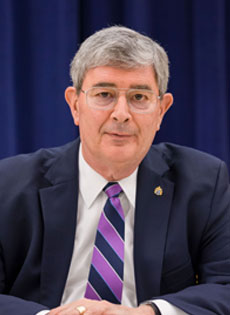
Demythologizing conclaves
Monday, August 8, 2022
*George Weigel
Pope Francis’s recent announcement that he will create 21 new cardinals on August 27, 16 of whom would vote in a conclave held after that date, set off the usual flurry of speculations about the shape of the next papal election. Much of that crystal ball-gazing was less than useful, based as it was on numerous myths about conclaves. Demythologizing those tropes will, I hope, function as a stabilizer, as the waters surrounding the Barque of Peter will likely get more turbulent before the next conclave meets in the Sistine Chapel beneath the stern gaze of Christ the Judge.
Myth #1: A pope who names a significant percentage of the cardinals who elect his successor thereby determines the succession. Not true.
In 1878, the cardinal-electors were all nominees of either Gregory XVI or Pius IX; they elected Vincenzo Gioacchino Pecci who, as Leo XIII, took the Church in a very different direction than his two immediate predecessors. In 1903, 61 of the 62 cardinal-electors who chose Pope Leo’s successor had been named by the man who, over 25 years, launched the Leonine Revolution and Catholicism’s engagement with modern culture and politics — cardinals who might have been expected to elect a man in Leo XIII’s image. Instead, after an interfering veto cast by that paladin of contemporary Catholic integralists, the Habsburg emperor, they elected Giuseppe Melchiore Sarto, who as Pius X firmly applied the brakes to Leo’s bolder initiatives.
In 1958, the cardinal-electors were all nominees of Pius XI and Pius XII, and it was widely assumed that the next pope would be in that line (Pius XII, as Eugenio Pacelli, having been Pius XI’s Secretary of State). Instead, the cardinal-electors chose an elderly placeholder, Angelo Giuseppe Roncalli. As John XXIII, he led the Church into an ecumenical council that both Pius XI and Pius XII had considered summoning before rejecting the idea; the rest is the history of our Catholic moment.
In 2013, the overwhelming majority of electors had been created cardinals by John Paul II and Benedict XVI. The man they chose, who took the unprecedented papal name Francis, has quietly but determinedly dismantled the legacy of John Paul II and Benedict XVI in numerous respects.
Myth #2: He who enters the conclave a pope leaves the conclave a cardinal. Not true.
In 1878, Leo XIII was chosen quickly, which suggests that he must have been very papabilebefore the conclave. Giacomo Della Chiesa, the cardinal-archbishop of Bologna and a veteran papal diplomat, was certainly papabile entering the wartime conclave of 1914, although it took a bruising struggle to get him elected. Just about everyone who knew anything expected Eugenio Pacelli to succeed Pius XI (including Pius XI), and he was indeed rapidly chosen. Giovanni Battista Montini was certainly very papabile in 1963, in part because many cardinal-electors had regarded him as the logical successor to Pius XII in 1958; but for some yet-unexplained reason, Montini, though archbishop of Milan, was not a cardinal when Pius XII died.
For those free of prejudices and appropriately skeptical of Italian media fantasies, Joseph Ratzinger entered the conclave of 2005 very papabile, and left the conclave as pope after brief balloting. Similarly, in 2013, those with real sources (which usually do not include Italian newspapers) knew that Jorge Mario Bergoglio, SJ, was a prime contender, and his election after a brief conclave was no surprise to them.
Myth #3: A lengthy, contentious conclave leads to a disempowered pontificate. Not true.
Giacomo Della Chiesa, Achille Ratti, and Karol Wojtyla were all elected after rather lengthy conclaves; moreover, the conclaves of 1914 and 1922 were rife with contention, as the cardinals continued to battle over the legacy of the Leonine Revolution. Yet Benedict XV, Pius XI and John Paul II were all great popes who made significant contributions to the Church. The lesson? A long conclave can produce a considered, thoughtful result.
Myth #4: The only cardinals who count are the cardinals who actually vote. Not true.
Since Paul VI reformed conclave procedures, only cardinals who have not reached their 80th birthday when the conclave opens can vote. However, all cardinals participate in the General Congregations of cardinals between a pope’s death or abdication and the immurement of the conclave. And they can have a real effect, as Britain’s Cormac Murphy-O’Connor proved by his advocacy of the Bergoglio candidacy in 2013. With over-80 cardinals of great moral authority like Francis Arinze, Wilfred Fox Napier, George Pell, Camillo Ruini and Joseph Zen participating, the discussions in the next General Congregations can be similarly influential.

